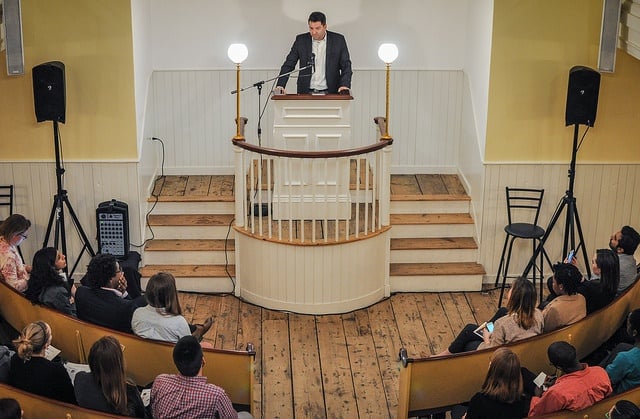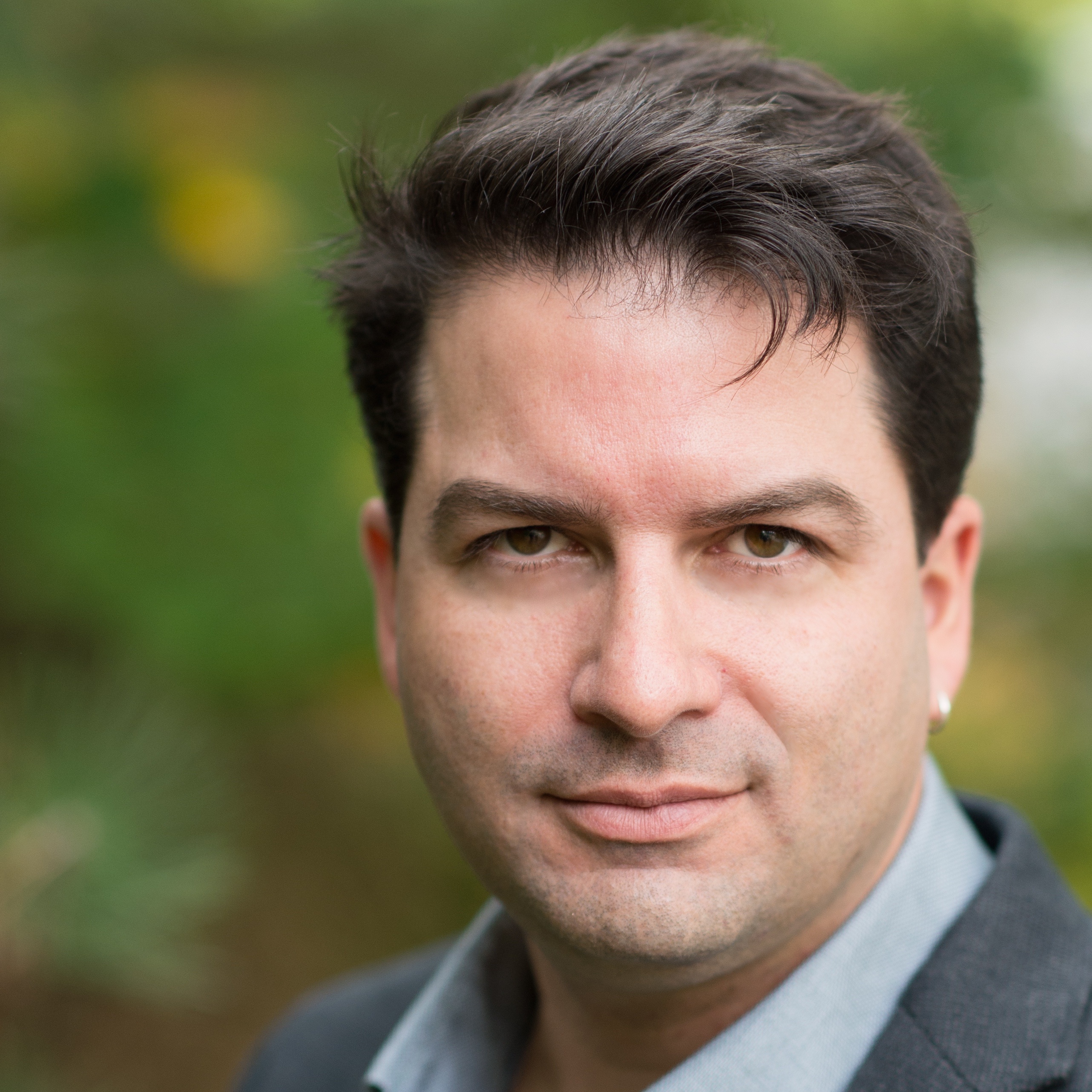
This blog is taken from a transcript of a talk given by Jeff Olivet at the African Meeting House in Boston on April 14, 2016, in which Jeff was joined by Marc Dones from the Center for Social Innovation and Massachusetts Commissioner of Public Health, Dr. Monica Bharel.
We Have a Problem
What an amazing thing to be in this place. A place where powerful voices and powerful leaders and powerful thinkers and powerful activists have changed the world...abolished slavery...fought for equality and human rights. It is a profound experience to stand up here at this podium. And it’s hard for me to say, but I’m here to tell you that we’ve got a problem. We got a problem that we don’t talk about a lot, so we’re going to talk about it now.
When I got into homelessness work, about 23 years ago now, I was told that homelessness was a problem of housing. It certainly is that. I was told that it was a problem of healthcare. Commissioner Bharel and I both know this to be true. We share histories with Healthcare for the Homeless programs all over the country. Certainly it’s a problem of healthcare. We were told it was a problem of mental health and addiction, domestic violence. All these things are true. What nobody ever told me was that it was also a problem of racism, discrimination, oppression, and inequality.
That is the conversation we need to have.
We’ve got a problem. And we’ve got a problem that has gone back to the beginning of this country. Back to the 1640s when homelessness was first documented in Boston, Newport, and Baltimore. Back to the Trail of Tears in the 1830s, a first federal policy that actively discriminated against a whole class of people in moving Native American folks from Alabama, Florida, and Georgia out to Oklahoma. That historical displacement and historical trauma still plays out in urban Indian homelessness.
We’ve had a problem since we institutionalized slavery, then Jim Crow, then the New Jim Crow—the mass incarceration of Black men and boys. These iterations of racism that go back to our historical roots as a nation still play out. They play out in poverty. They play out in homelessness. They play out in who gets the jobs, who gets the houses, who ends up in jail and ends up on the street and in shelters.
We have a problem. And that problem has been well documented in the last forty years. It has been documented by a study that looked at shelter utilization in New York and Philadelphia and found that African Americans were 16 times more likely than Whites to end up in the shelters in those cities. When you look at young kids zero to five, that same study found that Black boys and girls under the age of 5 were 29 times more likely than their White peers to end up in shelter. We’ve got a problem. It was documented in a Census Bureau Report that came out in 2011 that said not only do African Americans and Native Americans experience homelessness at higher rates, they stay homeless longer. There’s something that is keeping people of color not only from staying in stable housing to begin with, but also keeping them from exiting homelessness once they end up on the street and in shelter.
We have a problem when the point-in-time count that happens in Boston, and Washington, and San Francisco, and Toledo and every community in this country, shows year after year after year that people of color are dramatically over-represented in the shelters, on the streets, and in homeless programs all over this country. It is documented year after year after year, and yet...and yet...in all of that research, in all of that data collection, there is so little analysis of why. There is so little discussion of what those drivers are to begin with. And there is almost never mention of the word “racism.” If you’ll notice, we didn’t name this conversation tonight, “A Conversation About Health Disparities.” We did not name it “A Conversation About Cultural Competence.” Those are all valuable concepts. But we named it “A Conversation About Racism and Homelessness.” It is time that we look at this problem, and it is time that we call it what it is. It is time to say there is a deep and abiding connection between racism and homelessness in the United States.
But People Will Say...
But many people are going to say a lot of things about that. You may know that I blog a little bit on Huffington Post and elsewhere, and I rarely look at the comments because you just don’t want to do that. But sometimes I can’t help it. In one comment to one of my blogs on racism, somebody said, “Oh, just shut up. There are a lot of White people who are homeless also.” Well, of course there are a lot of White people who are homeless. Of course, there are a lot of Latinos who are homeless. There are some Asians-Americans who are homeless. But that’s missing the point. The point is that we should have no homelessness to begin with. This is unjust and outrageous in a country as rich as ours and if all other things were equal, you would expect the homeless population to reflect the overall population. But that same Census Bureau report says that’s simply not true.
Other people will say “yeah but this is an issue of poverty. People of color are more likely to be poor and therefore, they’re more likely to be homeless.” Right, that sounds logical? But if you look at the numbers and if you control for poverty, what we learn is that African Americans who are about 14% of the overall population, represent 27% of the poverty population, and between 40 and 50% of the homeless population. Something else is going on here. Something else is happening. Now some people are going to say, “Yeah, but that’s a problem in the South. That’s a problem of bigotry down there somewhere.” Down in North Carolina where they have a hard time figuring out what to do with Trans people trying to find a place to use the bathroom. They have a hard time figuring out in Tuscaloosa, Alabama, where I grew up, how to integrate the schools. When I grew up in Alabama in the 70s and 80s, we were moving towards integration and that progress has been chipped away at year after year after year. As have many of the gains initiated by the Voting Rights Act and Civil Rights Acts in the mid-60s. I moved to Boston in 1994 and looked around and found this place every bit as segregated as Tuscaloosa, Alabama. Not a whole lot has changed since then. This is not a problem only in Alabama or North Carolina or Texas.
Marc [Dones] and I were at a conference in Los Angeles a couple weeks ago, doing some work around racism and homelessness. We were talking to this wonderful group of folks from a very progressive town—they’re doing great work. And they said, “But it’s not really like that where we live...we don’t have this problem, do we?” And we basically said, “Yes you do. Look at your data.” This problem of overrepresentation happens in community after community after community.
Finally, people are going to say, “Isn’t this a thing of past?” Remember that moment after the 2008 presidential election when we were in a post-racial society? It was great, and it lasted about 30 seconds. Then a whole bunch of people said, “Hey, wait a minute, we’ve got a Black president now.” And hatred came out of the woodwork and took root, and now we see that hatred and bigotry playing out in the current presidential campaign. People are going to say a lot of things when we raise this problem. They’re going to say, “Let’s not talk about it until we have fully-baked solutions...What are we going to do about it?...These are entrenched problems, they’re hard to unpack, where do we even start? So let’s not open that can of worms. Let’s not go there until we have a toolkit to give to communities to train up landlords on how to not be bigots...or let’s wait until we can give homeless shelters all the support they need to create more diverse staff and board that reflect the faces and diversity of the people they serve.”
Open Our Eyes, Open Our Mouths
There is no silver bullet to ending racism, and there is no silver bullet to ending homelessness. What we have to do is wake up and start the conversation. We’ve got to open our eyes, we’ve got to open our mouths, and we’ve got to start calling this what it is and talking about it. Tonight’s conversation is a step in that direction. We challenge all of you and everyone in our communities to begin an open, transparent, difficult, and courageous conversation about racism and homelessness.
At this spot, right here [at the African Meeting House], in about 1829 or so, stood a Black abolitionist named David Walker. He was a Black Nationalist. He was rowdy. He should have been a Black Panther. He was ready 150 years before a lot of other people took on the Black Nationalist cause. David Walker said, “America is more our country than it is the Whites’, for we have enriched it with our blood and tears.” David Walker published an Appeal to the Coloured Citizens of the World, but in Particular, and Very Expressly, to Those of the United States of America. It was outlawed throughout the south. It was contraband, and this thing was spread around surreptitiously. People were arrested for carrying it. David Walker had a bounty put on his head. He died mysteriously either from poisoning or tuberculosis in 1830...they’re not sure which. Walker went on to say, “This country is as much ours as it is the Whites’, whether they will admit it now or not, they will see and believe it by and by.” He had a long view of racial justice, a long view of the fight for equality.
When we talk about race and homelessness, we have to connect the two. What we see is a larger national conversation about racism. You feel that, you hear it in the news every day and see dialogues in the city of Boston, in the state, across the country, about racism. And yet the broader conversation about racism rarely includes homelessness. Homelessness is scary and difficult for many people, and it doesn’t enter into that mainstream conversation. Our job as homeless advocates, as homeless providers, as people who have experienced homelessness, is to infuse those conversations about race with a conversation about deep poverty and homelessness. It is also our job to bring that conversation in the other direction, so that our conversations about homelessness include a racial dimension. We have to bring that national conversation about race into our solutions to homelessness.
I just read hot off the press this week, The State of Homelessness in America 2016. This report comes out each year from the National Alliance to End Homelessness. It covers a lot of ground, it talks about housing and services, it talks about families, and youth. It documents where we are as a country. It recommends solutions, some of which I agree with, some I don’t. But it’s a comprehensive document. I went through it because I figured I could find some good ammunition for this talk and found not a word about race. Not a word. We’ve got to infuse the conversation about homelessness with a racial dimension and a courageous conversation that goes beyond cultural competence.
We’ve also got to look at our own organizations. I know from many of the familiar faces in the room that many of you work or volunteer at homeless service organizations. Look around. Look at your staff and do a really good, thoughtful analysis of whether it reflects the faces and diversity and background of the people you serve. Now, as you go upstairs to the higher paying jobs, to the senior managers, to the executive leadership, to the board that comes in once a month to provide guidance to the organization. Tell me if those faces reflect the faces of the people you serve. If the answer is no—which it may be, because I see some of you nodding—do something about it. Don’t just talk about it. Do something about it. Don’t just do the analysis. Make changes. Do the same thing with your data. If you’re with the city or the state—and I know the Commissioner is going to talk later about how we can use data to drive change—look at your data and tell me if the folks who are getting the housing slots, which are precious commodities, and the folks who are getting the slots in detox and in drug and alcohol treatment, in mental health case management...tell me if those numbers reflect the overall numbers of shelter utilization in terms of race and ethnicity. If they don’t, do something about it.
We’ve got to open our eyes. We’ve got to open our mouth. We’ve got to start doing something about it.
One way to think about this is to conceive of our work to fight bias and discrimination in concentric circles. The first little circle is me. This is a very Buddhist way of thinking...you look at yourself first and you be there with yourself. Do that around your own biases, around your own role in perpetuating institutional racism. For the White folks in the audience, examine for real all of the White privilege that has helped you be where you are now. Unpack that and live with it and own it. If we all think about the biases and microaggressions we perpetuate against one another, that’s the place to start, we start with ourselves. Then you ripple that out to the next layer...to your friends and families, to the people you love, to the people you care about. Talk about this stuff. Talk about it over dinner. Talk about it when you’re out with friends. Talk about it in a real and deep way. Address it. Don’t pretend like this this is not happening. Don’t pretend like we don’t have a problem. And then the next circle includes our organizations, our coworkers, our community, our larger networks. Make change there.
And if we start doing that in concentric circles, we make change happen in big and lasting ways. You’ve got to start somewhere, and you start right here. I want to leave you with a wonderful concept from Dorothy Day, who was fighting homelessness in the 1930s and beyond through radical activism. Dorothy Day said that “what we would like to do is to change the world.” Ambitious, right? She said, “What we would like to do is make it a little easier for people to feed, clothe and shelter themselves...We can throw a pebble in the pond, and be confident that its ever widening circle will reach around the world.”
Listen to a podcast with Jeff Olivet and Jo Guidice discussing innovative ways the Dallas Public Library is serving and engaging customers who are homeless (19 minutes):
This post was first published on Huffington Post.
Image by Sarah Nichols for the Center for Social Innovation.








